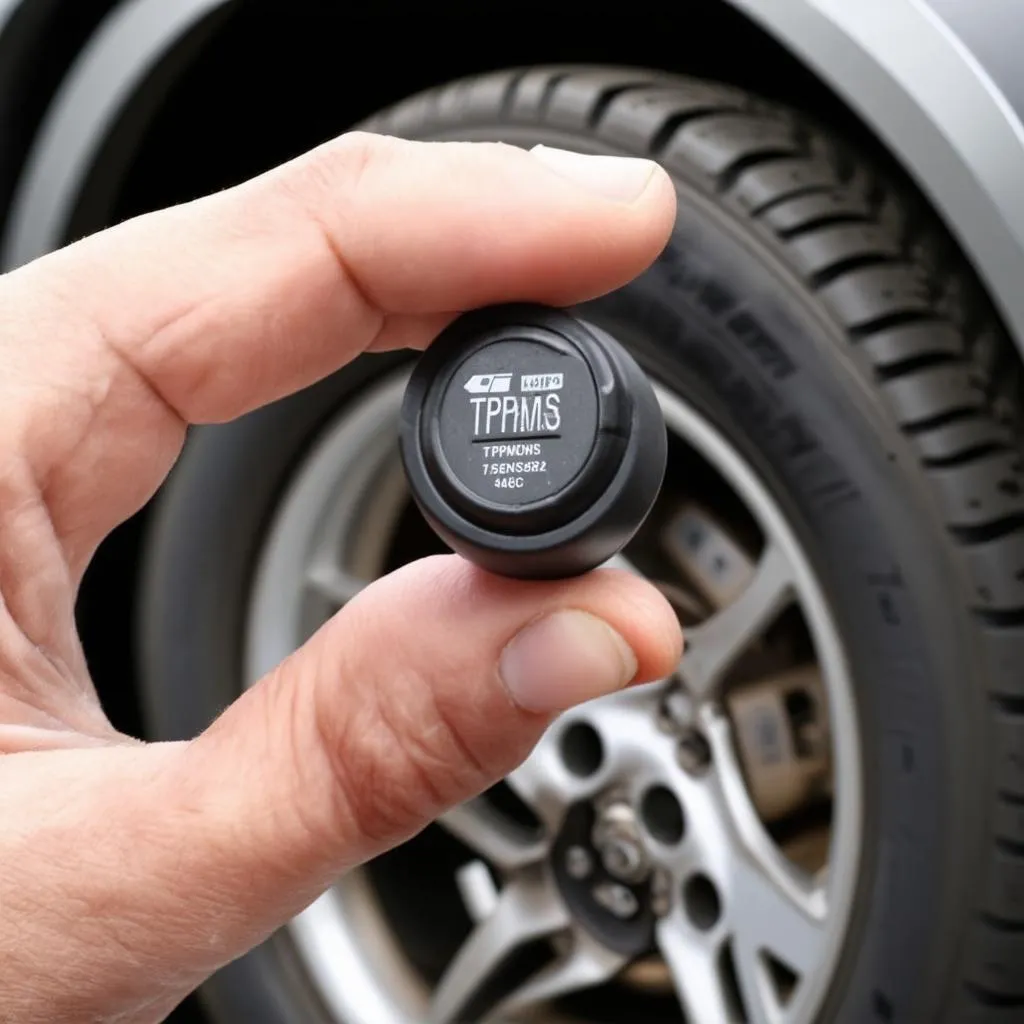Imagine this: you’re cruising down the Pacific Coast Highway, the California sun warming your face, when suddenly – beep, beep, beep – that dreaded TPMS light flashes on your dashboard. Your heart sinks. Is it a flat? You just put air in the tires last week!
You pull over, whip out your trusty OBD2 scanner hoping for a quick answer, but can an OBD2 scanner actually tell you what’s up with your TPMS? Well, the answer is a bit more complicated than a simple yes or no.
Decoding the Acronyms: OBD2 and TPMS
Before we dive in, let’s clarify what we’re talking about. OBD2 stands for On-Board Diagnostics, generation two. It’s the standardized system in your car that allows external electronics, like a scanner, to access your car’s computer system and diagnose issues. TPMS stands for Tire Pressure Monitoring System, a nifty safety feature that alerts you to low tire pressure.
The Connection (Or Lack Thereof)
Here’s the thing: most standard OBD2 scanners cannot read TPMS data directly. “Think of it like this,” explains automotive electronics specialist Dr. Anya Sharma, author of “The Connected Car: A Deep Dive”, “OBD2 and TPMS are like two separate departments in a company. They have their own specific functions and communication protocols.”
While your OBD2 port is the gateway to engine performance, emissions, and other crucial systems, TPMS usually operates on a separate frequency. This means your trusty OBD2 scanner might not speak the same language as your TPMS sensors.
 OBD2 port
OBD2 port
Exceptions to the Rule
“That being said,” Dr. Sharma continues, “there are always exceptions in the world of technology.” Some advanced, higher-end OBD2 scanners, particularly those designed for specific car brands like BMW or Mercedes-Benz, may offer TPMS functionality. These scanners can often read and display TPMS data, including individual tire pressures and temperatures.
Additionally, certain aftermarket TPMS tools can communicate with your vehicle’s TPMS system. These tools are specifically designed to diagnose TPMS issues and often come with the ability to program new sensors.
When Your TPMS Light Turns On
So, what should you do if your TPMS light pops on? While a standard OBD2 scanner might not give you the specifics, it’s still a good idea to:
- Check your tire pressure manually. Use a reliable tire pressure gauge to check each tire, including the spare.
- Inspect your tires visually. Look for any obvious signs of damage, punctures, or uneven wear.
- Refer to your vehicle’s owner’s manual. It often contains valuable information about your TPMS system, including how to reset it.
If you’re still experiencing issues, it’s best to consult a trusted mechanic or dealership.
FAQs about OBD2 Scanners and TPMS
Can any OBD2 scanner read TPMS? As mentioned earlier, most standard OBD2 scanners can’t read TPMS data. However, some high-end or brand-specific scanners might offer this functionality.
How do I know if my scanner supports TPMS? Check the manufacturer’s specifications or user manual for your specific scanner model. It should clearly state whether it supports TPMS readings.
What should I do if my TPMS light stays on after I’ve checked my tire pressure? There might be a problem with one or more of your TPMS sensors. It’s best to get your vehicle checked by a professional.
Explore More Automotive Insights
Want to learn more about car diagnostics, troubleshooting, and repair? Check out our other helpful articles:
Need Help with Your Car Diagnostics?
We’re here to help! Contact us on Whatsapp at +84767531508 for expert assistance with your diagnostic tool setup and any car-related queries. Our team of automotive specialists is available 24/7 to provide support.
 TPMS sensor
TPMS sensor
We hope this article helped clear up any confusion about OBD2 scanners and TPMS. Remember, while your trusty OBD2 scanner is a powerful tool for many car diagnostics, it might not be the right tool for TPMS issues. Safe driving!


